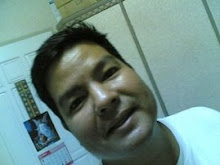Regarding commercial koi feeds, there is quite a broad range of available choices in the market. So broad, in fact, that new koi hobbyists sometimes worry about picking the incorrect type for the fish that he or she is about to bring home. There are two popular types of koi food available in the market today - pellets and sticks. Sticks are popular in Europe, while pellets are popular in US and Asia. Some sticks are fluffy and soft, making them more water-absorbent and easier to digest. These, however, may be more expensive pound-for-pound.
Sticks are easier to bite than round pellets because of their narrow ends. Pellet size, therefore, is important - young koi can suffer from perforated mouths while trying to swallow a pellet that's too big for them. If confronted with availability problems, it is thus better to buy undersized pellets than to buy oversized ones. Undersized pellets will only make the bigger koi get satisfied longer - that's all the harm it does.

Figure 1. There are many types of commercially
available koi food
Aside from looking at the size and shape of the koi food, its nutritional value must also be seriously reviewed. Commercially-prepared koi feeds would normally list 32%-40% protein, which is needed for growth and tissue repair. Feeds with high protein content are preferred for younger koi. Older koi must not get less than 30% protein in its daily diet. Koi feeds should also contain digestion-aiding enzymes as well as vitamins A (for better eyesight), B (for energy and better digestion), C (for immunity and bone development), and E (for reproductive health). Wheat germ-based commercial feeds are recommended to develop the body size of a koi. Spirulina-enhanced feeds are believed to enhance the color of koi. To know what nutrients your koi need, please see the Koi Nutrition Table.
Koi feeding frequency is usually determined by the routine or personal schedule of the koi keeper. However, a lot of people say that it is better to feed koi at shorter intervals with smaller amounts than to do a heavy feeding once a day. Still, the bottom line is never to feed the koi more than what they can finish in a few minutes, because fouling up the water with uneaten food is one risk nobody should take.
.jpg)



























No comments:
Post a Comment